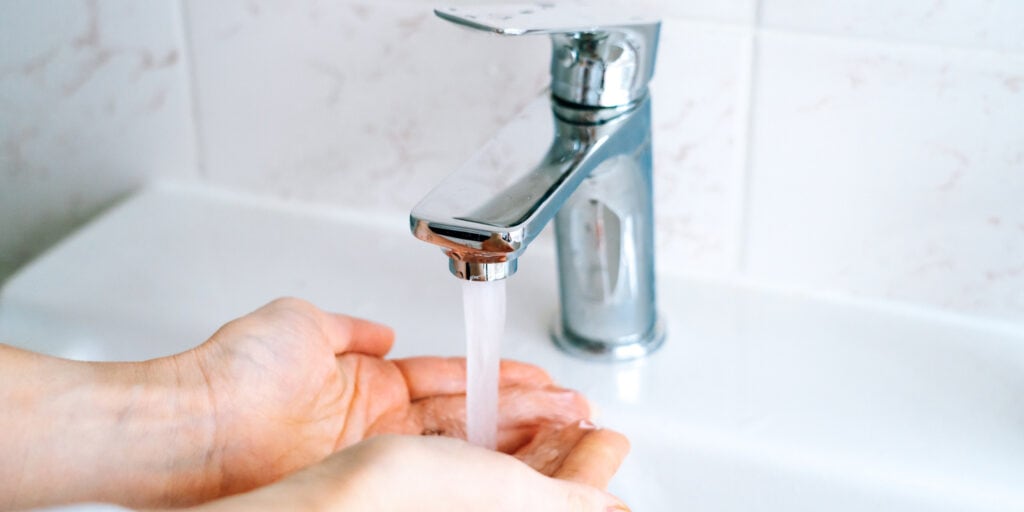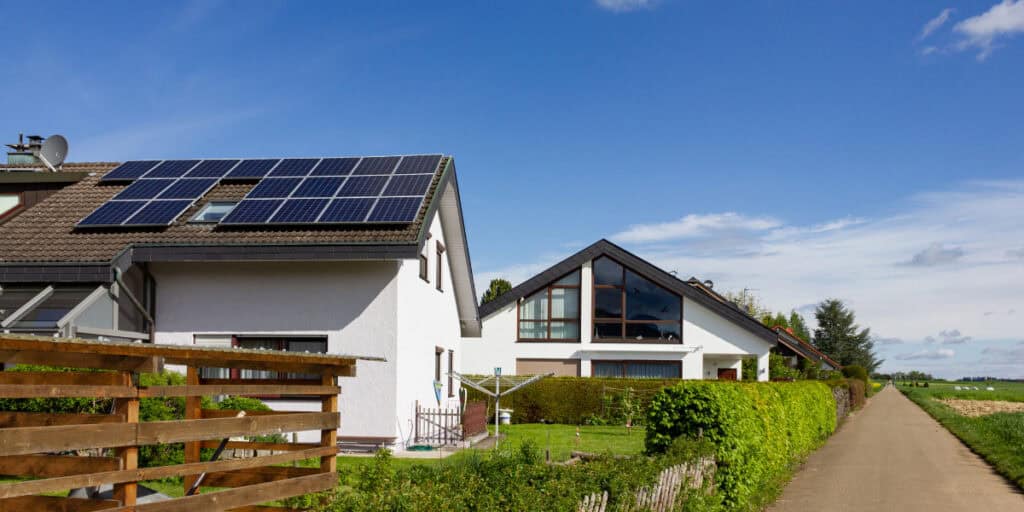Green living has become a buzzword in today’s world, but what exactly does it mean? It is more than just using eco-friendly products, or reducing your carbon footprint.
Green living is a lifestyle choice which emphasizes the importance of conserving natural resources, such as energy and water, reducing pollution, and limiting waste. It entails making conscious choices such as utilizing renewable energy sources, recycling, eating organic foods, using sustainable transportation or avoiding activities that pollute air and water.
Green living is about embracing a lifestyle that brings freedom and joy to you, as well as preserving the environment for future generations. In this article, we will explore what green living means in terms of everyday life and how it can bring more freedom, connection and joy into our lives.
The first step to green living is becoming more aware of our actions and their impact on the environment. We must consciously choose products and practices that are sustainable, recyclable or compostable whenever possible. This can range from choosing organic produce at the grocery store to signing up for paperless bills at home. We can also opt for energy efficient appliances when replacing old ones in order to reduce our energy consumption.
Finally, green living means taking action to preserve our planet through volunteer work or donations to environmental organizations such as Greenpeace or The Nature Conservancy. We must also be mindful of our consumption habits and make sure that we don’t buy anything we don’t need just because it is trendy or cheap. By making conscious decisions about what we consume, buy and do every day we can help ensure a healthier future for generations to come.
What is Green Living?
It’s no secret that green living is on the rise. Recent statistics show that almost 50% of Americans are now making eco-friendly lifestyle choices. But what exactly does green living mean? In its most basic form, it refers to making decisions and adopting habits that promote environmental responsibility and sustainable living. This includes things like reducing energy consumption, conserving water, using eco-friendly products, recycling and composting, buying locally grown food, and more. All of these green practices help reduce our impact on the planet.
At its core, green living is about taking personal responsibility for our environment. It’s about making conscious decisions to minimize our environmental footprint and be mindful of how our actions affect the world around us. It also means finding innovative ways to reduce waste and conserve resources – from simple everyday changes to larger scale initiatives – so that future generations can still enjoy a healthy planet.
Ultimately, green living is about balance – finding ways to meet our needs today without sacrificing the needs of future generations or damaging natural habitats in the process. By leading more eco-friendly lifestyles, we can help ensure a cleaner and healthier world for ourselves and those who come after us. With this in mind, let’s look at some of the benefits of green living.
Benefits of Green Living
With the definition of green living in mind, it’s time to explore the benefits of living a more eco-friendly lifestyle. From money savings to health benefits, there are numerous reasons why people should look into implementing green changes within their home.
One of the most significant advantages of green living is that it can help individuals save money over time. By switching to eco-friendly products and appliances, homeowners can reduce their energy consumption and monthly bills. Additionally, some utility companies even offer rebates or incentives when people switch to energy efficient models.
Besides saving money, living green also has numerous health benefits. Many toxic chemicals found in traditional cleaning or personal care products can cause allergies and skin irritations. By replacing these items with eco-friendly alternatives, homeowners can make sure that the air quality in their homes is safe for their family and pets. Additionally, using natural materials for things like furniture or rugs will reduce the amount of chemical emissions in a home as well.
There are considerable rewards associated with making smart decisions about how we live our lives on a day-to-day basis. Not only does this have positive impacts on our wallets but it also helps protect the environment from further harm and pollution. As we move forward into an increasingly globalized world, being conscious about our environmental impact is more important than ever before.
Environmental Impact
When it comes to green living, reducing our environmental footprint is key. We can reduce our impact in a variety of ways – from using eco-friendly products and investing in green energy to conserving water and mitigating climate change.
Making conscious decisions when it comes to our lifestyle has many benefits for the environment:
- Investing in green energy helps reduce emissions and encourages alternative sources of energy such as solar and wind power.
- Buying eco-friendly products reduces the amount of waste that goes into landfills, as well as harmful chemicals released into the air.
- Conserving water allows us to manage resources responsibly and prevent wasteful runoff.
- Mitigating climate change involves taking steps to reduce carbon emissions and increase the resilience of communities around the world.
- Green investments are often good for our financial portfolios, while also helping support sustainable companies.
Ultimately, reducing our environmental footprint is a crucial part of green living. Making small changes in our daily lives can have a big impact on the planet, while also helping us save money in the long run. With resource conservation being a top priority for many people, we all have an opportunity to make a positive difference for future generations.

Resource Conservation
The green of nature is a sign of hope that beckons us to find ways to protect our planet. Resource conservation is a key element in achieving that goal. As environmental home owners, we can take action to conserve resources and reduce our consumption by using eco-friendly products and adopting water conservation practices.
We must begin by understanding the impact of our own energy use on the environment. We can start with small steps such as unplugging appliances when they are not in use, replacing traditional light bulbs with LED bulbs, or weatherizing our homes to make them more energy efficient. These simple changes will go a long way toward reducing our carbon footprint.
Resource conservation does not end at home; it extends into our daily lives as well. When shopping for groceries, we can choose items that have less packaging and are locally sourced whenever possible. We should also be mindful of how much water we use when washing dishes or taking showers, and avoid wasting food by making sure leftovers go into the fridge promptly instead of ending up in the garbage. By making these conscious choices, we can ensure that our resources are being used responsibly and sustainably.
Living green is not only about preserving what we have; it’s also about creating a healthier future for generations to come. It’s up to us to take responsibility for the planet’s well-being and make sustainable practices part of our everyday lives.

Sustainable Practices
For those of us interested in green living, sustainable practices are the way to go. Sustainable lifestyle choices have a big impact on reducing our collective carbon footprint. From small everyday habits to larger investments in green products, there are many ways to make eco-friendly choices.
One of the most important aspects of a sustainable lifestyle is minimizing waste. This includes everything from refusing plastic bags when grocery shopping to composting food scraps for fertilizer. Reusable items like cloth napkins and canvas grocery bags also help reduce our reliance on disposable products and limit our consumption of resources.
Another key component of green living is energy efficiency. We can save energy by using solar panels or wind turbines for electricity production and make sure all appliances are Energy Star certified for maximum efficiency. We can switch to LED lights, use reusable water bottles, and unplug devices that aren’t in use. These simple steps will help reduce our energy consumption and create a more sustainable future for generations to come.
With every step we take towards sustainability, we’re making an effort to protect our planet while enjoying the freedoms that come with it.
Energy Efficiency
Now that we have discussed sustainable practices, let’s take a look at energy efficiency. Energy efficiency is a great way to help the environment and reduce your utility bills. It can be achieved by making simple changes such as installing energy-efficient appliances, using energy-saving lightbulbs, and switching to green energy sources.
Energy saving not only helps the environment but also helps you save money on your monthly bill. For example, installing LED lights in your home can significantly reduce electricity consumption. You can also install solar panels, which will generate renewable energy for your home and reduce electricity costs. Additionally, you can use motion sensors for outdoor lighting and set appliances to run on low power mode when not in use.
Finally, conserving energy is important for reducing our dependence on fossil fuels and protecting the planet from climate change. If everyone does their part to conserve resources through small lifestyle changes, it will make a big difference in preserving our environment for future generations. By focusing on renewable energy sources and utilizing efficient technology, we can work together to create a more sustainable world.

Reducing Waste and Recycling
Green living means taking steps to reduce our impact on the environment. One of the most important ways to do this is to reduce waste and recycle what we can. We can all make a difference by changing our habits and minimizing the amount of garbage we send to landfills.
By upcycling items and reusing materials, we can save money while also doing our part for the planet. We should try to use eco-friendly products, such as recycled goods or natural materials, whenever possible. This will help us avoid unnecessary waste and protect our environment from further damage.
We can also take steps to reduce our consumption by being mindful of how much we buy and using reusable containers when shopping or eating out. Making small changes like these will help us live more sustainably and create a healthier future for everyone.
Organic food choices are an important part of green living too; they provide us with greater nutritional value while also reducing the use of toxic chemicals in farming practices.
Organic Food Choices
Recent studies have shown that more than 80% of Americans now purchase organic food items. With this in mind, it’s clear that organic food choices have become an increasingly important part of green living. Organic agriculture is a form of sustainable agriculture that focuses on the use of natural processes and materials to maintain soil fertility and production. It also emphasizes the use of renewable resources, such as compost and animal manure, to reduce dependence on chemical fertilizers and pesticides.
Furthermore, organic farming avoids the use of genetic engineering and other technologies that can harm soils, plants, animals, and people. This approach also helps preserve biodiversity by avoiding monoculture, which is when one crop is grown in large areas instead of a variety of crops. Additionally, organic farmers often employ traditional farming techniques such as crop rotation to maintain soil fertility and minimize pest problems.

Organic food choices are not only good for our environment but also for our health. By buying organic produce we can avoid potential toxins from synthetic fertilizers and pesticides used in conventional farming methods. Moreover, because organic foods are produced without the use of hormones or antibiotics they are typically healthier for us overall.
Making the switch to organic food choices can be an easy step towards green living. Not only will it help protect us from potentially harmful chemicals but it will also support small farmers who are committed to sustainable agricultural practices. Additionally, organic food choices often taste better than their chemically-treated counterparts so it’s a win-win situation! With this in mind, transitioning to transportation alternatives is the next step towards green living.
Transportation Alternatives
Once we have made the decision to choose organic foods, the next step is to look at our transportation alternatives. There are many ways we can reduce our environmental impact when it comes to getting from place to place.
| Transportation Alternatives | Cost | Time |
|---|---|---|
| Bike-Sharing | Low | High |
| Electric-Car | Medium | Medium |
| Carpooling | Low | Medium |
| Ride-Sharing | Low | High |
| Public-Transport | Low | Medium |
The table above provides a brief overview of the different transportation options available and their respective costs and time constraints. Depending on how close you live to your destination, bike-sharing may be the most convenient option, allowing you to get some exercise while reducing your carbon footprint.
If you want more flexibility with your travel plans, electric cars are becoming increasingly popular due to their relatively low cost and environmental benefits.
Carpooling is also an efficient and cost effective way of getting around, as it allows multiple people in the same vehicle which reduces the amount of fuel required for each trip.
Ride sharing apps such as Uber or Lyft are also becoming more common, providing a convenient way for people to get around without having to own a car or take public transport.
Finally, public transport is usually the most affordable option if accessible in your area and will allow you to reduce your environmental impact significantly.
These transportation alternatives offer us numerous ways of reducing our carbon emissions while still being able to get from point A to point B quickly and efficiently. Now that we have looked at how we can reduce our environmental impact through food choices and transportation alternatives, let’s move on to looking at green building practices that can help us further reduce our ecological footprint.
Green Building Practices
Green living. It’s the embodiment of freedom, the power to take control of our lives and our environment. To practice green living is to prioritize sustainability, efficiency, and eco-friendly practices that protect both ourselves and our planet. A key component of this is green building – building with an eye towards sustainability and energy efficiency.
Green buildings can come in many forms – from residential homes to commercial buildings. Implementing a range of green building practices into construction ensures not only the health and safety of occupants, but also the long-term environmental benefits that come with it.
This includes using sustainable building materials like reclaimed wood or recycled steel, installing energy efficient lighting or windows, utilizing renewable energy sources for heating or cooling systems, or investing in water conservation techniques like rainwater harvesting systems or dual flush toilets.
The result? A healthier living space for all involved – from inhabitants to Mother Nature! Green buildings are no longer just a trend – they’re becoming increasingly popular in cities around the world as people recognize their importance in creating more sustainable future. These environmentally conscious structures will help us create a brighter tomorrow by reducing our carbon emissions and preserving natural resources for generations to come.
Frequently Asked Questions
How Can I Reduce My Carbon Footprint?
Reducing your carbon footprint is a great way to contribute to green living. From changing our daily habits and behaviors to considering more sustainable products, there are many ways we can reduce the amount of carbon emissions released into the atmosphere. Whether you choose to make small changes in your daily routine or take bigger steps like carbon offsetting, there are several options available for everyone.
Living a low-carbon lifestyle can start with little things like taking shorter showers and turning off the lights when not in use. It can also include larger changes such as cutting down on air travel and switching from gas-powered cars to electric vehicles. Additionally, you can purchase energy-efficient appliances and make sure that your home is properly insulated. All of these small steps will help decrease your overall environmental impact and ultimately reduce your carbon footprint.
If you want to take it one step further, then consider investing in renewable energy sources like solar panels or wind turbines.
This type of investment could help you achieve carbon-neutral living by offsetting any emissions created from other activities such as driving or heating your home with gas. You could also look into purchasing “green” products, which are made with sustainably sourced materials and have less of an environmental impact than other conventional items.
Finally, if none of these measures seem feasible for you, then consider joining a community that supports a low-impact lifestyle by donating money or volunteering time to local green initiatives.
No matter what path you decide to take, reducing our collective carbon footprints is essential if we want to achieve true sustainability and protect our planet for future generations. There are many ways we can all do our part in creating a greener tomorrow – so let’s get started!
What Is The Most Cost-Effective Way To Practice Green Living?
As environmental homeowners, we’re always looking for cost-effective ways to practice green living. After all, reducing our carbon footprint should be a top priority as part of our sustainable lifestyle. But what is the most cost-effective way to do this?
The answer lies in energy efficiency and eco-friendly transportation. Investing in energy efficient appliances can drastically reduce your overall green living costs, as well as opting for sustainable transportation options such as biking or walking over driving. While these may be more expensive upfront, they will save you money over time and help reduce emissions from cars.
Another important aspect of cost-effective green living is purchasing eco-friendly products. From reusable bags to home cleaning materials, there are plenty of options available that are both affordable and environmentally friendly. Plus, investing in these products now will save you money in the long run by cutting down on single-use items!
Making small changes like these can have a big impact on our environment and help us lead healthier lives. So let’s get out there and make it happen! Let’s start building a greener future today – one purchase at a time!
What Are The Most Environmentally Friendly Transportation Options?
When it comes to green living, one of the most important things to consider is environmentally friendly transportation. There are a variety of eco-friendly transportation options available that can help reduce our carbon footprint. Here are some of the most popular green transportation methods:
- Bicycle: Riding a bicycle is one of the best ways to get around while also being good for the environment. It’s an affordable, low-carbon option and requires no fuel or electricity. Plus, you’ll get some exercise in the process!
- Public Transportation: Taking public transportation is another great way to reduce your environmental impact. It’s often more efficient than driving and many cities now offer electric buses and other sustainable transport solutions.
- Carpooling: Carpooling is another great option if you need to travel long distances or if you have multiple people going to the same place at once. It saves money on gas and reduces your overall carbon emissions compared to driving alone.
- Walking: When possible, walking is always the best option! Not only will it help you stay fit and healthy, but it’s also 100% emission-free and can be very therapeutic as well.
There are many ways that environmental homeowners can practice green living when it comes to transportation choices. By taking advantage of these eco-friendly alternatives, we can all do our part in reducing our carbon footprint and protecting our planet for future generations.
How Can I Make My Home More Energy Efficient?
Living green is like finding a rare gem: it’s a journey of discovery and fulfillment. Making your home more energy efficient is a great way to start that journey. There are many ways to make your home eco-friendly and energy-saving, from simple daily habits to larger projects. Here are some ideas on how to get started:
- Energy-efficiency:
- Install an Energy Star appliance or device in your home
- Change out all lightbulbs for LED bulbs
- Unplug electronics when not in use
- Green homes:
- Invest in solar panels for power consumption
- Create an indoor garden with plants that can help purify the air
- Replace old windows with double or triple-paned glass
- Energy saving:
- Utilize natural heating and cooling methods such as fans, shades, and insulation
- Install low flow showerheads and faucets to reduce water usage
- Use energy efficient windows treatments such as blinds and shades.
By taking these steps, you can make your home more environmentally friendly while still enjoying modern comforts. The investment you put into making your home energy efficient will pay off in the long run with lower utility bills and increased comfort. Plus, you’ll be doing your part to protect our planet’s resources for future generations. So take the first step today – start living green!
What Are The Long-Term Effects Of Green Living?
Green living has become increasingly popular due to its numerous long-term effects. A person who engages in green living can lower their carbon footprint, save money, and help the environment. Here’s a look at some of the benefits of green living and how you can get started today.
First, let’s look at the long-term effects of green living. Lowering your carbon footprint by utilizing energy efficient home appliances and environmentally friendly transportation is one way to make a positive impact on the environment. Additionally, cost-effective green living practices like conserving water or using natural light can reduce utility bills over time.
Making your home more energy efficient is an important step towards becoming greener and saving money in the long run. Some ways to do this include:
- Replacing traditional bulbs with LED or CFL lights
- Adding insulation to windows and doors
- Installing solar panels for renewable energy
Finally, there are plenty of ways that you can reduce your environmental impact from day to day. This includes reducing waste by composting food scraps and recycling items that can be reused or repurposed. Additionally, switching to non-toxic cleaning products and utilizing reusable containers instead of single-use plastics are both great ways to live a greener lifestyle.
Living a greener life is an easy way to reduce your environmental impact while also saving money in the long run. By taking these simple steps, you can create a healthier home and planet for yourself and future generations!
Conclusion
Living a green lifestyle is not only a great way to help the environment, but it can also save you money in the long run. By making changes to your home and lifestyle, you can reduce your carbon footprint and live more sustainably.
Making simple changes like using energy efficient light bulbs and choosing greener transportation options can make a big difference. The cost associated with making these changes may be intimidating at first, but they will pay off over time. Additionally, by investing in renewable energy sources such as solar power, you can make an even bigger impact on the environment while also saving money on your electricity bill.
Overall, green living is an important part of our responsibility to take care of the planet. It’s easier than ever to adopt eco-friendly habits that will benefit both ourselves and the environment. By taking small steps now, we can create a better future for generations to come.




